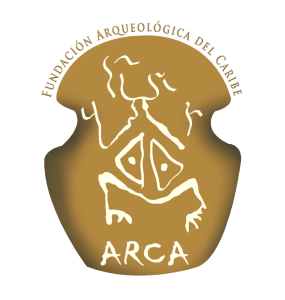1. Ascanio D. Rincón, Luis A. Lemoine, H. Gregory McDonald (2021). A new addition to Pleistocene megalonychid sloth diversity in the northern Neotropics. Journal of South American Earth Sciences, Volume 110, 2021, # 103379.
- ISSN 0895-9811
- https://doi.org/10.1016/j.jsames.2021.103379.
- https://www.sciencedirect.com/science/article/pii/S0895981121002261
- RESUMEN: Se reporta un nuevo registro de un perezoso Megalonychidae del conjunto de mamíferos de finales del Pleistoceno de la Cueva de Iglesitas (Mi.50), Caracas, Venezuela. Este nuevo sitio, el primero con fauna del Pleistoceno ubicado en los alrededores de Caracas, se encuentra en un área prístina en cuanto a su geología y estratigrafía y preserva sedimentos intactos conteniendo fósiles que proveen importante información acerca de la paleofauna y el paleoambiente de finales del Pleistoceno de Caracas y el suroeste de la región del Caribe. Se presenta un análisis relacional entre este nuevo perezoso y otros miembros Megalonychidae. Palabras claves: Megalonychidae; Venezuela; Pleistoceno.
- ABSTRACT: We report here a new record of a megalonychid sloth from a late Pleistocene mammal assemblage from Cueva de Iglesitas (Mi.50), Caracas, Venezuela. This new site, the first with a Pleistocene fauna found in the vicinity of Caracas, is in a pristine geological and stratigraphic area and preserves previously untouched sediments containing fossils that provide important information about the late Pleistocene paleofauna and paleoenvironment of Caracas and the southwestern Caribbean region. A preliminary assessment of the relationship of this new sloth to other members of the Megalonychidae is presented. Keywords: Megalonychidae; Venezuela; Pleistocene
2. Early indigenous occupations of Margarita Island and the Venezuelan Caribbean. Andrzej T. Antczak, Luis A. Lemoine Buffet, Ma. Magdalena Antczak and Valentí Rull. Chapter 10. P 129-143. 2019. Compiled edition in EARLY SETTLERS OF THE INSULAR CARIBBEAN, Dearchaizing the Archaic, Edited by Corinne L. Hofman and Andrzej T. Antczak . 2019
3. The Archaeology of the Archaic Age on Margarita Island within the Context of the Venezuelan Caribbean. Luis Lemoine, Andrzej Antczak, Ma. Magdalena Antczak. Presented at The 81st Annual Meeting of the Society for American Archaeology, Orlando, Florida. 2016 ( tDAR id: 403657)
Summary: Since the 1950s, the archaeology of Margarita, the largest island of Venezuela, has been neglected leaving open an important lacunae in the current knowledge of Venezuelan and Caribbean archaeology. In 2008, human bones were accidentally unearthed on the island, allowing the recovery of two individuals and associated cultural materials that included lithics, shells, and red ochre. The archaeological layer and human bones date to between 4,090 and 2,160 BP. The osteological analyses show consistency with similar Archaic finds reported from the insular Caribbean and support the claim for a marked anthropo-physical difference between the Archaic Age individuals and latter Ceramic Age settlers. This discovery prompted the initial reconnaissance of Margarita and Cubagua islands carried out in 2014, and further systematic archaeological survey that began in 2015 as part of the Nexus 1492 ERC project of Leiden University, in synergy with Venezuelan scholars and institutions, and the communities of the Guaiquerí Indians. Thus far, nine Archaic sites have been located and evaluated through surface collections and test pit excavations. This paper discusses the preliminary interpretations of settlement patterns and the subsistence economy of the Archaic Age settlers of Margarita Island within the wider geographical and historical-cultural context of the Venezuelan Caribbean.
4. Rancherías: Historical Archaeology of Early Colonial Campsites on Margarita and Coche Islands, Venezuela. Authors: Andrzej T. Antczak, Ma. Magdalena Antczak, Oliver Antczak, and Luis A. Lemoine Buffet. Chapter 7, p146–174. 2019. Compiled in: Material Encounters and Indigenous Transformations in the Early Colonial Americas, Editors: Corinne Hofman and Floris Keehnen
- https://brill.com/view/book/edcoll/9789004273689/BP000007.xml
- https://brill.com/view/title/54191
- Abstract: In the early 16th century, the islands of Margarita, Coche and Cubagua lay at the core of the so-called ‘Coast of Pearls’ in northeastern Venezuela. Cubagua hosted Nueva Cádiz, one of the earliest Spanish towns in South America, since 1528. Despite such precocious credentials, the understanding of early colonial realities on these islands has almost entirely relied on documentary sources with only a small contribution from archaeology. Excavations were carried out in Nueva Cádiz in the late 1950s, but the recovered materials were never studied comprehensively. The archaeological record of Margarita is largely outdated and unsystematic while Coche has never been surveyed archaeologically. Drawing from multiple sources of data, this paper sheds new light on the earliest colonial settlements established on these islands, referred to as rancherías, and on the nature of the intercultural dynamics that took place there. We analyze data obtained from recent archaeological surveys on Margarita and Coche, study museum collections of materials recovered in the 1950s, and draw from the database of the Venezuelan Islands Archaeology project. We analyze the ecology of the pearl oyster and finally compile documentary information. Specific sites on Margarita and Coche which yielded abundant 16th-century Spanish and other European ceramics, Amerindian pottery, and possibly intercultural hybrids, are discussed here. The contemporaneity of the Nueva Cádiz hub and the location of these campsites, close to the large pearl oyster beds, have been firmly established. These data reveal the beginnings of the early Spanish town of Nueva Cádiz and underscore the role of pearls and other material culture in the early colonial endeavors in northeastern Venezuela.
